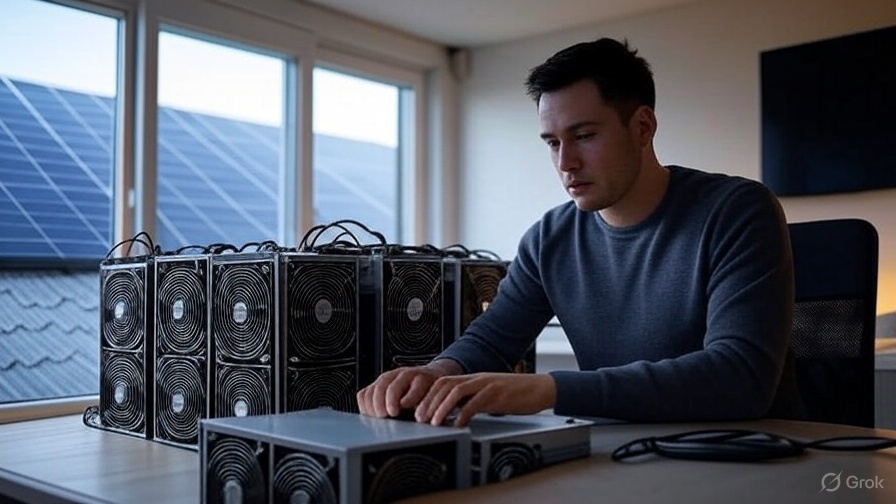In the ever-evolving world of Web3, Bitcoin remains the cornerstone of decentralized finance, and mining it from the comfort of your home is a tantalizing prospect for crypto enthusiasts. While the days of casually mining Bitcoin on a laptop are long gone, advancements in technology and a bit of know-how can still turn your home setup into a crypto minting machine. Here’s how you can dive into the world of Bitcoin mining without leaving your living room.
Bitcoin mining is the process of validating transactions on the Bitcoin blockchain by solving complex cryptographic puzzles, earning miners freshly minted BTC as a reward. It’s the backbone of the network’s security and decentralization, but it’s no secret that mining has become a high-stakes game dominated by industrial players. Yet, for the determined individual, home mining is still within reach—if you’re ready to navigate the challenges and costs.
First, you’ll need the right hardware. Forget your gaming PC; modern Bitcoin mining demands specialized equipment called ASICs (Application-Specific Integrated Circuits). These powerhouse devices, like Bitmain’s Antminer series, are designed solely for crunching Bitcoin’s SHA-256 algorithm. However, they don’t come cheap—expect to invest thousands of dollars for a competitive rig. Pair that with a reliable power supply and cooling system, as these machines run hot and heavy.
Next, consider your energy costs. Mining is notoriously power-hungry, and your electricity bill will likely be the make-or-break factor. Locations with affordable, renewable energy sources—like solar or hydropower—give home miners an edge. Before you start, calculate your potential profitability using online tools like WhatToMine, factoring in your local electricity rates and the current Bitcoin price. In 2025, with Bitcoin’s halving cycles increasing scarcity, efficiency is everything.
Software is your next step. Mining programs like CGMiner or BFGMiner connect your hardware to the Bitcoin network, but you’ll also need a digital wallet to store your hard-earned rewards. Security is paramount—opt for a hardware wallet like Ledger or Trezor to keep your BTC safe from hacks. Many home miners join mining pools, like Slush Pool or F2Pool, to combine computing power and share rewards, smoothing out the volatility of solo mining.
The setup doesn’t end with hardware and software. A stable internet connection is crucial, as downtime can cost you precious mining time. Ventilation is another factor—ASICs generate significant heat, so a well-cooled space is non-negotiable. And don’t forget the noise; these machines can rival a jet engine, so consider soundproofing or a dedicated mining shed.
While the barriers to entry are steep, home mining offers more than just potential profits. It’s a hands-on way to engage with Bitcoin’s decentralized ethos, contribute to the network’s security, and gain a deeper understanding of blockchain technology. Plus, in a Web3 world where sovereignty and self-custody are paramount, mining your own Bitcoin feels like staking a claim in the digital frontier.
However, it’s not all rosy. The upfront costs, energy demands, and market volatility mean home mining isn’t a get-rich-quick scheme. Regulatory hurdles, like local laws on crypto or energy usage, can also complicate things. And with Bitcoin’s difficulty adjusting every two weeks, staying competitive requires constant upgrades.
So, is mining Bitcoin at home worth it? For some, it’s a passion project; for others, a calculated side hustle. Either way, it’s a bold step into the heart of Web3. If you’re ready to roll up your sleeves, crunch the numbers, and embrace the grind, your home could become a node in the world’s most iconic blockchain. Just don’t expect to strike digital gold overnight—patience and strategy are your best tools in this crypto quest.
Note: Always research local regulations and consult financial advisors before diving into crypto mining.












